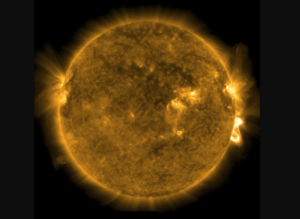The mission, called Virtual Super-resolution Optics with Reconfigurable Swarms (VISORS), seeks to study the regions in the sun’s corona where energy is released.
“Blue Canyon Technologies is providing key components in a program that will, for the first time, reveal individual energy-release sites in the solar corona to test theories of coronal heating,” George Stafford, Blue Canyon Technologies co-founder and CEO, said in a statement. “Our company’s technology will enable the VISORS program to help scientists understand the sun’s plasma physics and refine models for nanoflares and corona composition.”
Nanoflares are frequent explosions on the surface of the sun.
If all goes as planned the two VISORS cubesats will travel in 2023 to low Earth orbit. Once there, they will fly 40 meters apart and create a distributed telescope. The lead spacecraft will be equipped with optical elements and the trailing spacecraft will contain the detector.
The University of Illinois is working with NASA Goddard Space Flight Center and a number of universities on the VISORS program including the Georgia Institute of Technology, Stanford University, Washington State University, the Ohio State University, Purdue University, the University of California San Diego, New Mexico State University, Montana State University and the University of Colorado.
Blue Canyon Technologies is scheduled to deliver cubesats to Georgia Tech for instrument integration in 2022.



